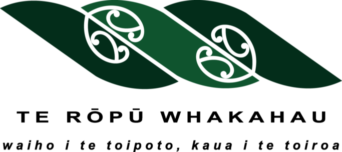Kia ora koutou
I thought I would follow Donalds example and provide some korero and insights gained from attending the Hui ā Tau ki Parihaka – Hokia ki tō mounga kia purea koe e te hau a Tāwhirimātea – Return to your mountain to be replenished/rejuvenated by the winds of Tāwhirimātea. After being absent for a number of years it was great to be back amongst the group and to make that return when the hui was again in Parihaka.
Ka tuku ngaku mihi ki a Taranaki Mounga, Taranaki Tangata i kaha manaaki nei i a mātou, tae atu ki ngā kaiwhakahaere i whakariterite i ngā kaupapa mahi i raro rā i te mana o Ngā Kaiwhakahau, te kōmiti matua. Tēnā koutou katoa.
Congratulations to Te Paea a deserved recipient of the Meri Mygind Wahine Toa Award & Ariana Tikao a deserved recipient of the Robin Hakopa Te Reo award.
1.The Whakatauki:
How appropriate this whakataukī is to the group and the work each and everyone of you do in working with taonga tuku iho (tti), because there are times when you must remove yourself from your work and the constant contact with tti and take time out for you to be rejuvenated spiritually, physically by returning home (where ever that may be).
2. Te Reo o Taranaki
The one korero that stood out was: inter-generational transmission
It was clear to see that Ruakere Hond, Wharehoka Wano were both fufilling the dreams, aspirations expressed in the whakataukī. They live it, they speak it, they action it.
Their passion for te reo Māori instilled in them when they were both students at Waikato University and in Te Whare Wānanga o Waikato Kapa Haka. Both influenced by their tutors of the time, Timoti Karetū, Wharehuia Milroy, Hirini Melbourne, Miria Simpson, ngā matanga reo – Māori language experts. Several years later they have both returned home and their passion for Te Reo Māori focussed their sights on the revival of Taranaki reo dialect including those expressions of Taranaki reo in mōteatea, whaikōrero, whakataukī. We saw this right throughout the hui – the whaikōrero or a presentation supported by a mōteatea or traditional waiata. I recall Ruakere saying they consciously made a call to stop singing the “Ehara i te mea” type waiata several years ago and began reviving their own traditional waiata.
3. Key insight
The one major insight that I really noticed was the growth of te reo among the TRW members. That is a great sign to see. There appears to be more speakers of te reo in the group now and everyone gave it a go at whakawhanaungatanga time and then there were pockets of people using reo during the hui, something that did not happen in the past, everyone had a natural tendency to switch to Pākehā.
Ka mihi ki a koutou.
Secondly if you want te reo be a living language in your home, at your marae, everyday – be prepared for the long long long haul and remember: intergenerational transmission.
While this is not an insight I was reassured by the presence of our 2 pou, Bella Tarawhiti and Taina McGregor. They remain stalwarts of the rōpū. They are TRW matanga reo and tikanga (Reo & tikanga experts) Ngaku mihi ki a rāua tahi.
Finally while I loved every session during the 3 days, I want to congratulate Sheeanda and Bruce/Ngā Kaiwhakahau for the brilliant brainstorming session on the third day. It was a great way to end everything and more importantly to know we have reciprocated the hau kāinga (home people) generosity by giving back something concrete to help them in the future.
4. Poutuarongo Puna Maumahara – Bachelor Māori Information/Knowledge Management
A three year degree programme that was developed by members of TRW in 1998 the Diploma and 1999 the Bachelor and delivered at Te Wānanga o Raukawa.
I appreciate being given some time to talk about the programme and to place before the rōpū several recommendations that have come out of the annual monitoring and 3 year review cycle of the programme. These recommendations are as follows;
a) Offer TRW members and kaiāwhina who teach on the programme the opportunity to enrol in the next intake of the free online Poupou Huia Te Reo programme to build reo capacity. Programme is 18 weeks and intake 2 starts 18 July. Enrolments close on 8 July.
To enrol go to the Huia te reo http://www.wananga.com/
b) That we withdraw the program from the LIANZA Professional Registration Scheme. This was put to the TRW membership and it was agreed to withdraw the program from this scheme.
After the hui when I spoke to a number of attendees, they were surprised and believed the program should still remain part of the scheme. Having heard their comments I am hesitant to proceed with withdrawing the program and would like to give the members more time and an opportunity to give comment to this recommendation first. You can respond to this email or directly to me with your comments.
c) Re-establish an Advisory Board – this is made up of industry people including institutions that deliver these types of qualifications. Could TRW suggest 4-5 names for this Board?
d) A graduate profile and/or alumni is established – I will be looking at our graduates list and then determine a way forward. This will serve as a marketing tool for the program.
Thats it from me, kia tau rā ngā manaakitanga ki tēnā, ki tēnā.
Hou
Pai mārire
Hinureina





